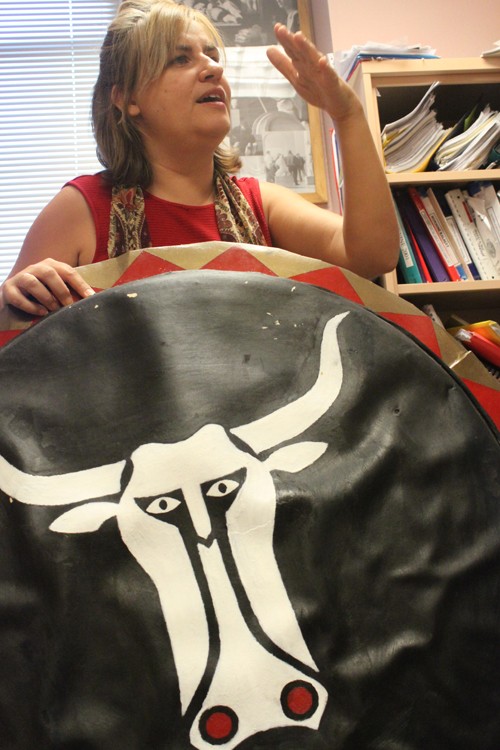It’s all Greek to students in a course on ancient Greek technology disguised as an upper division “”term-paper”” class.
In the class, students have the opportunity to actually create items used in ancient Greece.
Projects range from making ink and perfumes from original Green recipes, to making papyrus — which can be done using plants around Tucson — to working with metals and ceramics.
“”I’ve had students make solid cast bronze like the early Greeks had in their sanctuaries,”” classics professor Eleni Hasaki said. “”Others have used the lost wax technology used by later Greeks, but ceramics is my specialty.””
The class works with different people on campus and in the Tucson community to give students an introduction to the range of artistic resources available to them.
“”This week we talk about stone carving and the different hardness on stones,”” Hasaki said. “”We go out into the community to a sculptor’s workshop to carve in stone.””
Hasaki also collaborates with the UA Department of Materials Sciences and Engineering and works closely with the ceramics studio on campus.
“”It gives students the opportunity to work with other departments,”” Hasaki said. “”If you’ve never been to different facilities on campus this is a good chance.””
This class doesn’t stop with modern technology. Students have gotten together and helped build a Greek kiln at a local high school, St. Augustine’s Catholic High. Scientists around the country use this kiln to test ceramic qualities since there are so few wood-firing kilns left in the world.
Students learn that Greek technology was not only the foundation for modern technology, but is also used in many ways today.
The final project is assigned around a centralized theme for the year that students can relate to. “”Because of the climate change and environmental concerns, we’re doing agriculture this semester,”” Hasaki said.
Each student chooses the material they are most interested in, which has helped make the outcomes unusual. For example, one student who was a wrestler made a shield out of leather, wood and metal, and painted a picture of a bull’s head — a symbol of strenglth — on the front, finally inscribing his artist’s mark on the back in Greek.
Projects like this are judged not only on the final result but also based on a written outline of steps and illustrating the process.
“”People understand better with hands-on projects,”” Hasaki said.
This class is open to all students, but “”it helps to be in the major or know a little about the ancient world,”” she added.
“”I love the class and it’s really interesting,”” said Stephanie Raynor, an anthropology senior in the class. “”(Hasaki) teaches it really well and I think anyone could enjoy it.””









